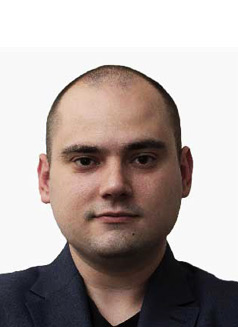How to enable LTE and an application on a single chip with QuecOpen
One of the greatest impacts on IoT device design, performance and cost is the number of components that are required in each device. Each additional component adds cost, takes up space and has the potential to limit flexibility. Complexity is also increased because of the need to ensure each component integrates smoothly with the others in the device.
There are therefore substantial advantages in minimizing the number of components utilized in an IoT device. Specifying pre-integrated sub-assemblies of components is one way to reduce the number of items and suppliers involved but this shifts the integration workload from the device maker to the sub-assembly maker. The work still needs to be done and it can time and come at a cost.
A more elegant way to streamline the number of components is to bring together capabilities of multiple components into one single component. One area in which this has been achieved is by enabling an IoT module to also work as the device’s main processor. Although complex to develop, this approach delivers clear benefits to organisations that are designing or deploying IoT devices.
These benefits include an accelerated product development period because both the module and the main processing resource are an integrated unit. This also means that circuit design for the device is simplified, reducing cost. Having one component performing the IoT module and processing tasks also helps to decrease the size of a product and has the potential to decrease its overall power consumption.
Further to these advantages, organisations can benefit from enhanced intellectual property protection thanks to anti-copy technology embedded in the module and they can achieve improvements in performance-to-price ratio, thereby enhancing the competitiveness of the IoT device in the marketplace.
Quectel has been quick to realize the potential of enabling the module to work as the main processor in an IoT device and has developed QuecOpen, a method to achieve this dual capability. QuecOpen enables the combined functionality to be managed, simplifying hardware and software design flows for wireless applications and streamlining the design process to make it more time efficient and cost effective. An important aspect of QuecOpen is that it enables firmware over the air (FOTA) upgrades so devices can be managed in the field, allowing the flexibility that is vital to the success of IoT applications and device deployments.
The complexity involved should not be underestimated but there are established engineering principles to manage this approach effectively, for which QuecOpen provides a framework. There are also real-life examples of QuecOpen being utilized to achieve the benefits of enabling the IoT module to work as the main processor in an IoT device.


One example shared in a recent Quectel Masterclass involves GNSS-enabled vehicle tracking with live data acquisition. In the QuecOpen application, the service’s need to access GNSS from the modem is recognised and a common interface is provided to enable users to receive or query behavioral data. This service also requires access to an LTE network so the data can be sent to the cloud, or an alternative system, for processing.
Another example shared was a smart outdoor lighting device that also includes air quality measurement plus a cloud monitoring capability. The device has a serial peripheral interface (SPI) for the radar, interfaces for air quality sensors and has many general-purpose input/output (GPIO) interfaces which are used to control the lights. There is also an LTE network interface to enable the cloud monitoring capability. The QuecOpen method means all these functions can be performed on a single chip, delivering the benefits outlined above.
The complexities and benefits of achieving more on a single chip using the QuecOpen method were detailed in the recent Quectel Masterclass in which Quectel field application engineers Mark Geiger and Dusan Poluga introduced QuecOpen and provided a development guide along with real life scenarios and a demo. They also took questions from the audience to help attendees learn more about QuecOpen. The Masterclass, ‘LTE and your application on a single chip, the QuecOpen way‘, can be listened to here.